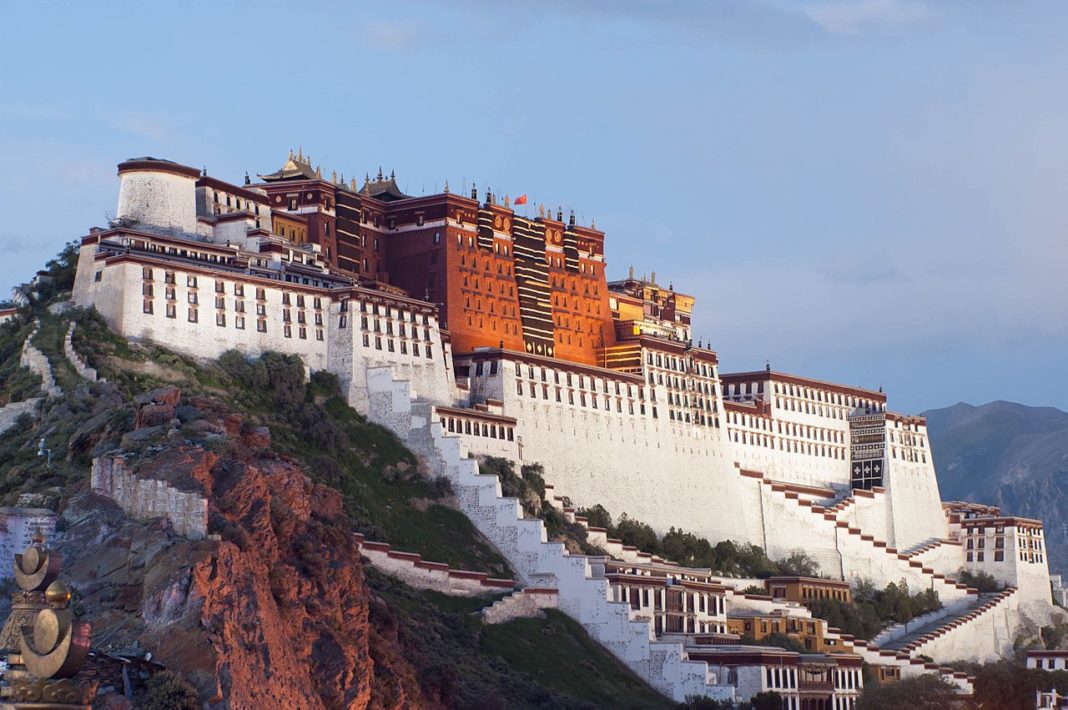The palace is named after Mount Potalaka, the mythical abode of the bodhisattva Avalokiteśvara. The 5th Dalai Lama started its construction in 1645 after one of his spiritual advisers, Konchog Chophel (died 1646), pointed out that the site was ideal as a seat of government, situated as it is between Drepung and Sera monasteries and the old city of Lhasa. It may overlay the remains of an earlier fortress called the White or Red Palace on the site, built by Songtsen Gampo in 637.
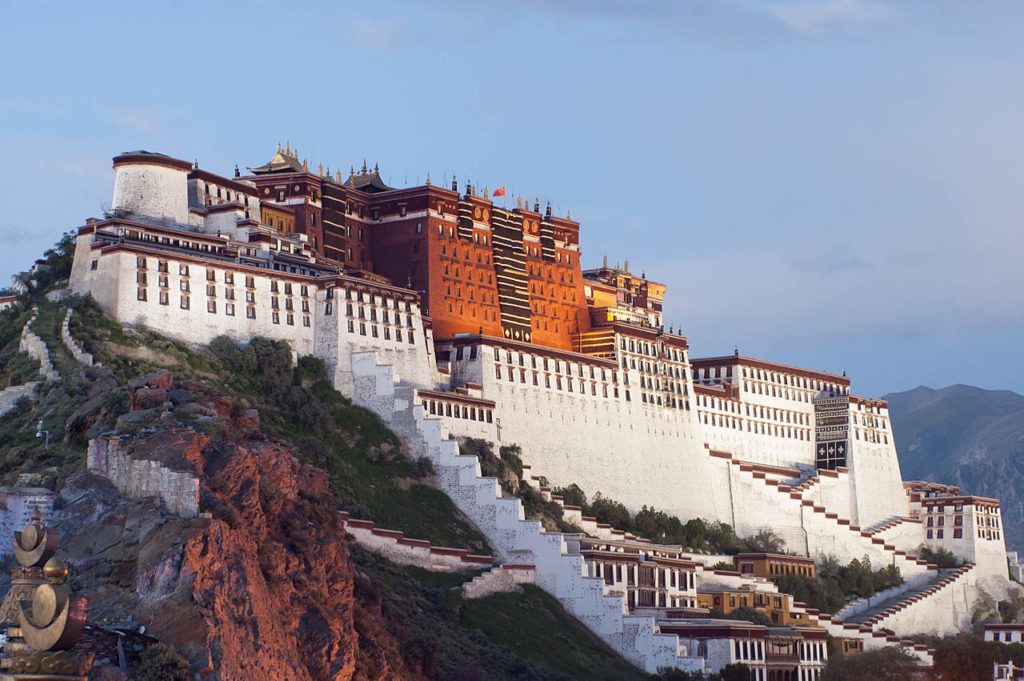
The building measures 400 meters east-west and 350 meters north-south, with sloping stone walls averaging 3 meters thick, and 5 meters thick at the base, and copper poured into the foundations to help prove it against earthquakes. Thirteen storeys of buildings, containing over 1,000 rooms, 10,000 shrines, and about 200,000 statues, soar 117 meters on top of Marpo Ri, the “Red Hill”, rising more than 300 meters in total above the valley floor.
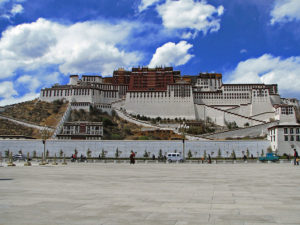
Built at an altitude of 3,700 m (12,100 ft), on the side of Ri Marpo (‘Red Mountain’) in the center of Lhasa Valley, the Potala Palace, with its vast inward-sloping walls broken only in the upper parts by straight rows of many windows, and its flat roofs at various levels are not unlike a fortress in appearance. At the south base of the rock is a large space enclosed by walls and gates, with great porticos on the inner side. A series of tolerably easy staircases, broken by intervals of a gentle ascent, leads to the summit of the rock. The whole width of this is occupied by the palace.
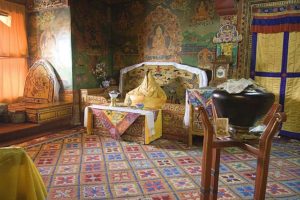
The central part of this group of buildings rises in a vast quadrangular mass above its satellites to a great height, terminating in gilt canopies similar to those on the Jokhang. This central member of Potala is called the “red palace” of its crimson color, which distinguishes it from the rest. It contains the principal halls and chapels and shrines of past Dalai Lamas. There are in these much rich decorative paintings, with jeweled work, carving, and other ornamentation.
The lower white frontage on the south side of the palace was used to hoist two gigantic thangkas joined representing the figures of Tara and Sakyamuni during the Sertreng Festival on the 30th day of the second Tibetan month.
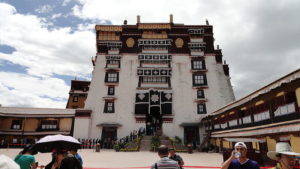
Apart from being a famous imperial palace of Tibetan kings and sacred land of Buddhism in Chinese history, the Potala Palace is also known as a treasure house of arts that collects a large number of cultural relics of it, including ten thousand pieces of Thangka (Buddhist scroll paintings), statues of Buddhas made from gold, silver, jade, wood and clay, bullaes, sutras, Sharipu of Sakyamuni, etc.
In 1961 it was announced to be a site under national protection by the State Council of the People’s Republic of China and was put on the list of World Cultural Heritage in 1994.
According to Wikipedia





